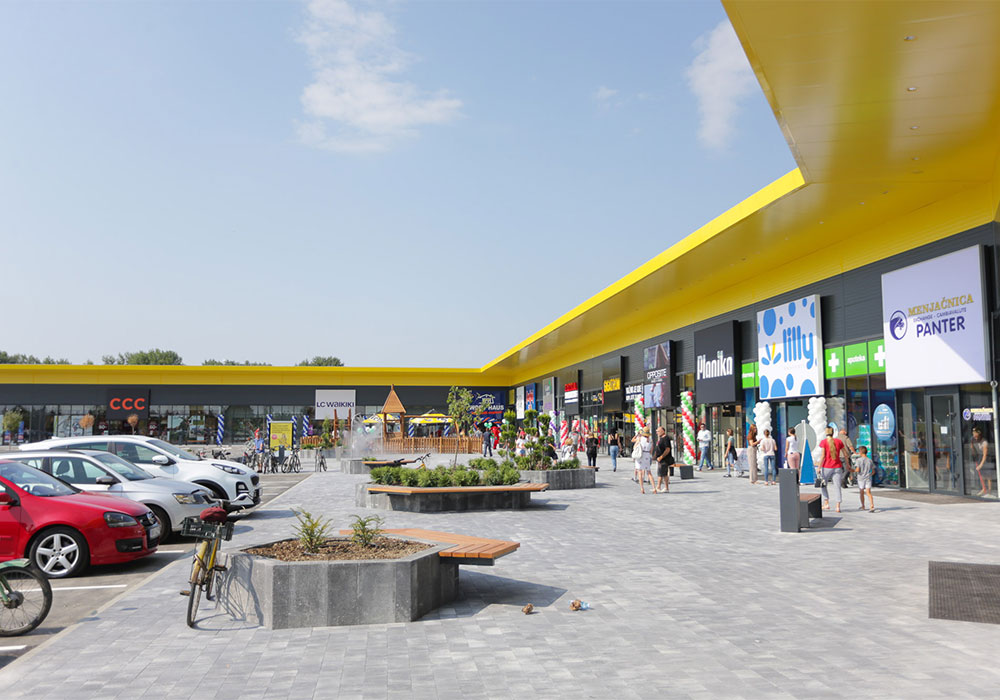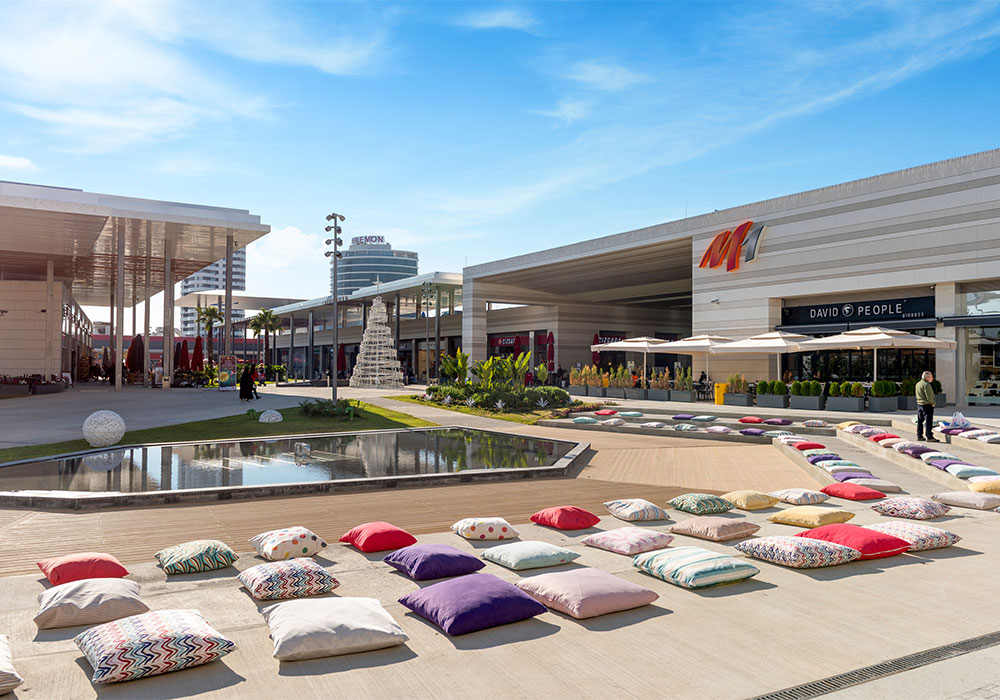News about plans for and openings of retail parks are currently coming up all over the industry. For example, Immofinanz recently opened its tenth Stop Shop in Serbia, specifically in the city of Sremska Mitrovica. Stop Shop is a well-known retail park chain of the Austrian real estate group. Immofinanz is driving the steady growth of its Stop Shops in general, as their next step includes the expansion of the portfolio to 90 locations. The most recent acquisitions include six fully rented retail parks in Slovenia and Poland with roughly 54,000 sq m of rentable space.

Trei Real Estate GmbH announced a new addition at almost the same time: The company opened its twelfth retail park in Poland under the umbrella of its Vendo Park brand. The property is located in the small town of Pułtusk in the voivodship of Masovia. Pepijn Morshuis, CEO of Trei Real Estate, said, “The Vendo Park in Pułtusk marks the successful continuation of our plans to expand on the Polish retail park. It is our third Vendo Park asset in the Masovian region. Given the strong demand, we plan to open another three Vendo Parks in Poland before the end of this year.”
Easily accessible
The London-based property investor, developer, and asset manager Poseidon Group continues to expand and strengthen its Capitol Park network throughout Croatia. Požega Shopping Capitol in the eastern Croatian city with the same name will open in October 2019. By the end of 2020, the company will be running eleven Capitols nationwide. The company is also active in other countries, as Capitol Park intends to become the leading retail park network in Southeast Europe. That is an ambitious goal.

Many new projects in Central & Eastern Europe (CEE) are also in their planning or opening stages. According to a current study by Cushman & Wakefield (What’s next – European Retail Park Trends and Outlook) 219,000 sq m of new area was delivered there in 2018– a 17% increase on 2017. Retail park floorspace in CEE amounted to 5.7 million sq m as of January 1, 2019, with the Czech Republic, Romania and Poland accounting for 66% of the total retail park market in the region. However, in Western Europe development has almost reached maturity.
The market data only reflects parts of this current and full-blown metamorphosis of retail parks. They were considered a portfolio’s necessary evil for a long time and were neglected by the retail real estate industry. By now, they are the darlings of investors as well as tenants. The actual driving force behind the retail parks’ meteoric rise are the consumers. They are longing for easily accessible center with high-quality gastronomic offers and sophisticated ambiance. They appreciate one-stop shopping experiences combined with free parking. Supermarkets are becoming particularly important as tenants. After all, online retail is hardly competing with retail parks due to their function as local supplier, contrary to traditional shopping centers. For motorized consumers, these retail parks are often strung together along traffic circles on their way home or to work. They visit the ones that provide what they need.
Low leasing and ancillary costs
It is therefore hardly surprising that retailers in general and grocery stores in particular are focusing their new efforts on retail parks. Especially because leasing and ancillary costs are usually much lower than in malls or on shopping streets. Simple options for expansion and mostly hassle-free deliveries are further key benefits.
Jean-Christophe Bretxa, Chief Executive Officer von Metro Properties, agrees: “I think people appreciate the convenience of retail parks. The schemes are easy to access and it’s easy to find parking. They also appreciate the tenant mix.” Retail parks are an important part of Metro Properties’ business. The company operate schemes in three countries: 19 in Germany, 13 in Poland and four in Turkey, a total of 36. Furthermore, it has a joint-venture with MEC in Germany, which manages 55 retail parks. As there are 450 bis 500 locations in this asset class or with comparable layouts in Germany, Metro Properties and MEC are an important player in this country.
Metro Properties has no new retail park developments in their pipeline. “But we redevelop our locations, for example EDU in Bremen; this is project that happened recently. Last year, we completed the development of our project in Adana in Turkey, with now more than 200 shop units. Four years ago, we completed the refurbishment of Weserpark in Bremen in Germany, of which we sold our shares in the meantime,” says Bretxa. Stephan Freitag, Head of Asset Management Center und Leasing Management Germany at Metro Properties, adds, “There are two redevelopment projects in Germany happening right now. One in Erfurt and the other one in Alzey.”

Multi-channel approach
When asked about the competition and synergies with online retail, Bretxa refers to two important lessons they learned over the past five years. Firstly, Metro Properties use their retail parks as collection points. That is why for example the company has an Amazon Locker in its building in Mainz. Multi-channel approaches are definitely supported. “Secondly, online retailers know that they do more business if they have a physical touchpoint in their catchment area. Consumer Electronics has a lot of online business. But they love to have a small store, even if it’s only 400 sq m. Because when customers have any troubles with their online purchases, they know that they can come and talk to a human being–and not just a chatbot,” says Metro Properties’ Chief Executive Officer.
However, operators and developer see not just profitable synergies with the online retail sector. Quite the contrary: the tenant mix in retail parks seems oftentimes virtually immune to online retail. Discount stores and cheap chain stores contribute significantly to this situation. Goods that are offered at mostly very cheap prices can easily compete with bargains on the internet.
The conversion right, which most retailers offer, is also a strong argument for these suburban retail agglomerations. Consumers do not have to worry about return costs for erroneous orders. According to the analysts of Cushman & Wakefield, developers, investors, and tenants also appreciate the benefits and the flexibility of retail parks.
Retail parks proved to be an efficient alternative to shopping centers, notably during times of economic uncertainty and retailer sales volatility. With generally lower rents and service charges, flexible floor layouts and increasing access to smaller cities, the retail park format is expected to remain attractive to both existing occupiers and new market entrants. Changing market conditions have also had an impact on retailer expansion strategies, which are increasingly focused on second and third tier cities.
In most countries, retail park occupiers expect a fit-out contribution from landlords. Regarding lease lengths, ten years is becoming standard, with retailers commonly seeking breaks in year five or seven. Moreover, in some countries, lease lengths are decreasing from 10 to 15 years to 6 to 7 years. Retailers on retail parks are showing more flexibility around the concept and unit size, which can vary by location and market.
Landlords offering more reasons to visit
Retail park landlords have been focused on adjusting tenant mixes to align with local needs. This includes increasing the F&B and leisure offer, targeting fashion retailers and extending the offer of convenience goods and services. Larger parks have been investing more in leisure, particularly by incorporating branded food operators and gyms. Some landlords have made improvements to the external environment such as better landscaping and design. In Germany, there is an increasing number of entertainment events which take a place in retail park car parks. This includes flea markets, sports competitions, screens to watch sports events, soccer and other world or European games. Besides free parking, landlords have organized free bus transport for customers. For example, Flamingo retail park in Xanthi, Greece offers free transport for customers by shuttle bus every 20 to 30 minutes. Another notable trend has been increased marketing activity on social media. Consumers seem to like it and it looks like the renaissance of these formerly neglected retail properties will remain unstoppable for quite some time.






